
The lime-speck pug is a moth of the family Geometridae. It is a common species throughout the Palearctic region, the Near East and North Africa.

Calliteara pudibunda, the pale tussock, is a moth of the family Erebidae. The Dutch common name for the moth (Meriansborstel) comes from the butterfly and insect painter Maria Sibylla Merian. The species was first described by Carl Linnaeus in his 1758 10th edition of Systema Naturae. It is found in Asia and Europe.
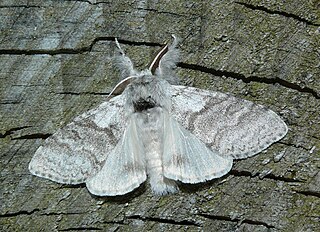
Calliteara is a genus of tussock moths in the family Erebidae. The genus was erected by Arthur Gardiner Butler in 1881.
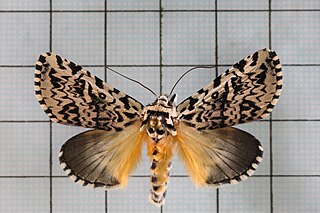
Trichosea champa is a moth of the family Noctuidae first described by Frederic Moore in 1879. It is found in the Himalayas, north-east India, Sri Lanka, China, Taiwan, Japan, and Russia.
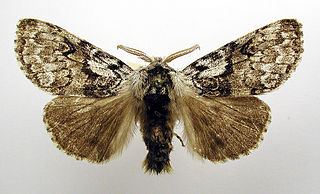
Calliteara abietis is a moth of the family Erebidae. It is found from northern and central Europe, through Russia to Japan.

Antinephele lunulata is a moth of the family Sphingidae. It was described by Rothschild and Jordan in 1903, and is known from forests and wooded habitats from Sierra Leone to Cameroon, the Democratic Republic of the Congo, Zambia, Zimbabwe and Tanzania, as well as Madagascar.
Choreutis achyrodes is a moth of the family Choreutidae. It is known from China, Japan, India (Assam) and the Oriental region.

Calliteara farenoides is a species of moth of the family Erebidae. It is found in Queensland.

Calliteara kikuchii is a moth of the family Erebidae first described by Shōnen Matsumura in 1927. It is found in Taiwan.

Koyaga virescens is a moth of the family Noctuidae first described by Shigero Sugi in 1958. It is found in Japan and Taiwan.

Calliteara arizana is a moth of the family Erebidae first described by Alfred Ernest Wileman in 1910. It is found in Taiwan.

Calliteara baibarana is a moth of the subfamily Lymantriinae first described by Shōnen Matsumura in 1927. It is found in Taiwan.

Eupithecia jezonica is a moth in the family Geometridae. It is found in Asia, including India and Nepal. It has also been recorded from Kazakhstan, the Russian Far East and Korea, Japan and Taiwan.
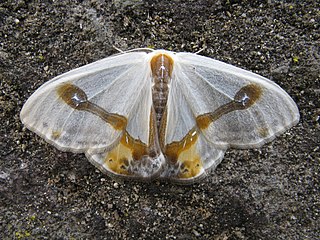
Macrocilix mysticata is a moth in the family Drepanidae first described by Francis Walker in 1863. It is found in India, Myanmar, Taiwan, Japan and China.

Calliteara fortunata is a moth of the family Erebidae first described by Alois Friedrich Rogenhofer in 1891. It is found on the Canary Islands.
Anarsia protensa is a moth of the family Gelechiidae. It was described by Kyu-Tek Park in 1995. It is found in Japan and Taiwan.

Homona magnanima, the Oriental tea tortrix moth, is a species of moth of the family Tortricidae. It is found in Japan, Taiwan, China and Vietnam.
Tridrepana lunulata is a moth in the family Drepanidae. It was described by Arthur Gardiner Butler in 1887. It is found in Indonesia, Papua New Guinea and Australia, where it has been recorded from northern Queensland.

Cotana lunulata is a moth in the family Eupterotidae. It was described by George Thomas Bethune-Baker in 1904. It is found in New Guinea.
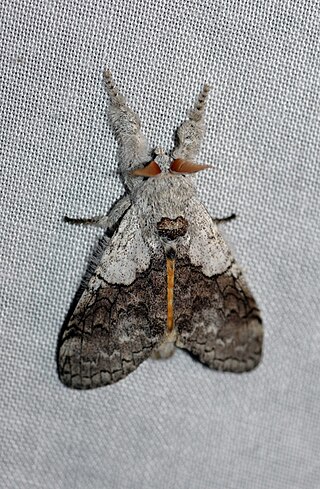
Calliteara horsfieldii, or Horsfield's tussock moth, is a moth of the family Erebidae. The species was first described by the British entomologist Edward Saunders in 1851, and named in honor of the British naturalist Thomas Horsfield, who traveled southern Asia and published works on zoology from the region. C. horsfieldii can be found in southern Asia, the islands of the northern Indian Ocean, and many parts of south east Asia and Indonesia. It is also sometimes referred to as the Yellow Tussock Moth.

















